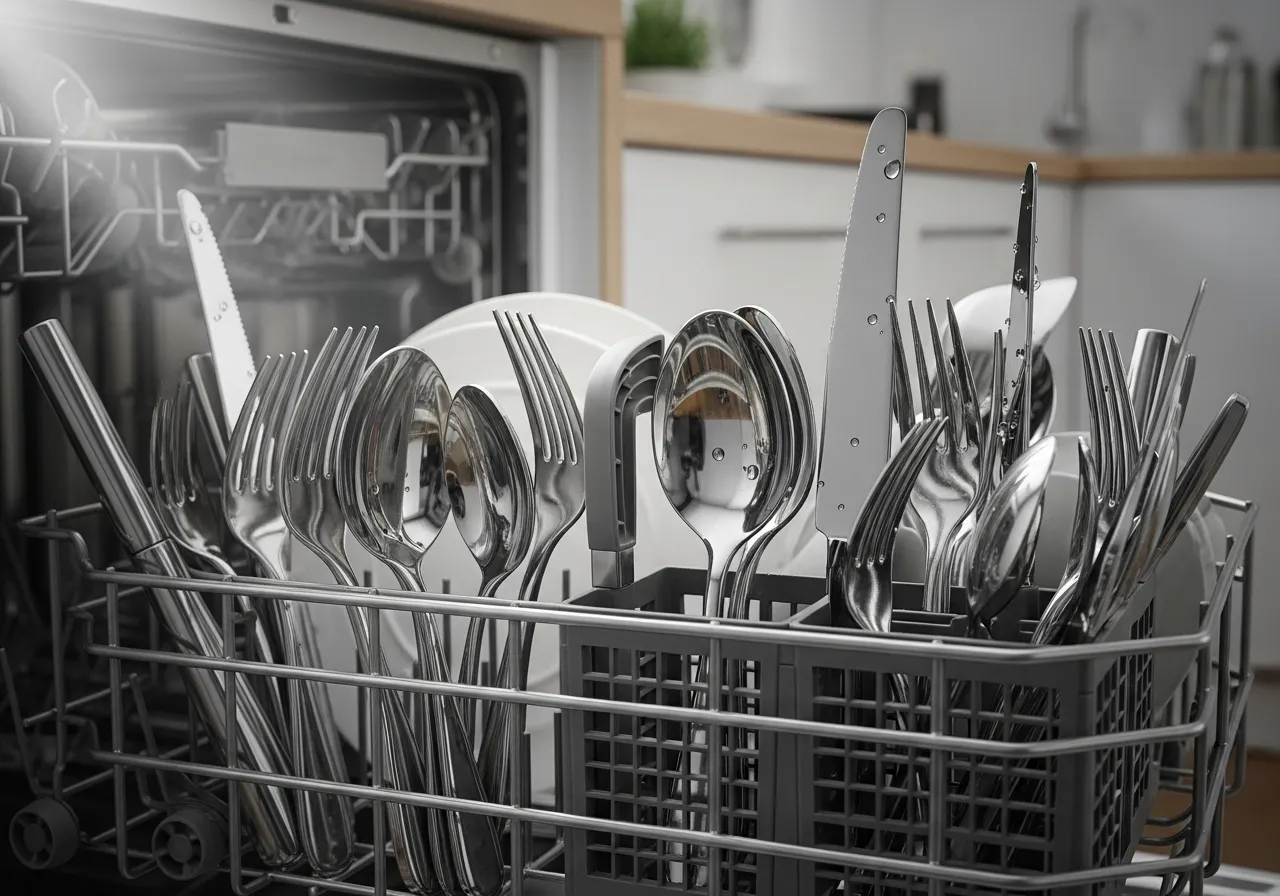
Step 4: The Great Silverware Debate – Up, Down, or Sideways?
Few topics inspire more passionate opinions than the proper way to load silverware. The goal, as with all other items, is to prevent nesting and ensure every surface is exposed to water and detergent. There are a few expert-approved methods, depending on the type of dishwasher you own.
The Basket Method: The Mixed Approach
If your dishwasher has a traditional removable basket, the best practice is to mix the silverware. This means you should alternate utensils within each compartment: a fork next to a spoon, next to another fork, and so on. Furthermore, you should vary their orientation—some handles up, some handles down. This deliberate mixing is the most effective way to prevent spoons from “spooning” (nesting together perfectly) and forks from interlocking their tines.
Why it works: This seemingly chaotic method creates space between each individual piece of cutlery, allowing water and detergent to circulate freely around every surface. It is the most reliable way to avoid those annoying bits of food that get stuck between nested spoons.
A Critical Safety Note: There is one major exception to the “handles down” rule: sharp knives. Always place steak knives, paring knives, and other sharp blades with their handles pointing up and their sharp blades pointing down. This significantly reduces the risk of accidentally cutting your hand when reaching into the basket to unload.
If your basket has a slotted grid cover, you should use it. Placing one piece of cutlery in each slot is the ultimate way to guarantee perfect separation. It takes a few extra seconds to load but provides the most consistent cleaning results.
The Third Rack Method: The Organizer’s Dream
Many modern dishwashers have replaced the basket with a slim, third-level rack at the very top of the machine. This is the gold standard for cleaning silverware. This rack has shallow, grooved trays designed to hold each piece of cutlery individually on its side. Simply lay your forks, spoons, and knives flat in the designated slots.
This method is superior because it guarantees that no two pieces will touch or nest, ensuring 100% water coverage. It also frees up a significant amount of valuable real estate on the bottom rack for more pots and plates. Unloading is also faster and more hygienic, as you can grab a handful of spoons or forks by their handles without touching the eating surfaces.

















